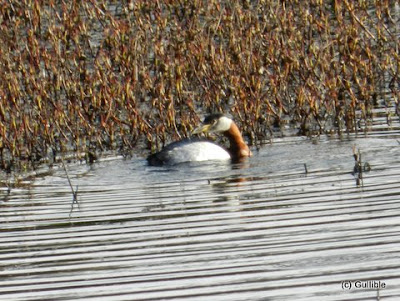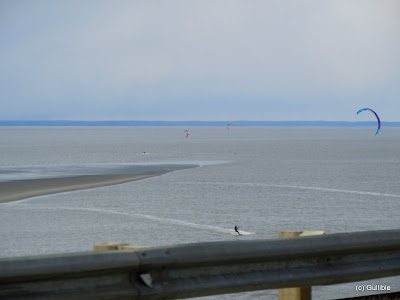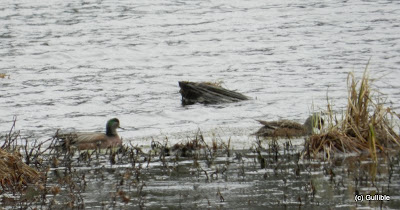Alder "trees" are the default brush of Alaska. Disturb the natural ground cover and alders will grow there, over-taking everything in its inexorable path to conquering the world.
That is particularly true along the Seward Highway, where alders consume the down-slopes of all the scenic pullouts . Add human litterers to the mix and what you get isn't pretty. It's beer bottles, diapers, and other litter trapped in the minefield that is alder brush.
Take this nice pullout along Canyon Creek at Mile 50.5.
The scenery here is wonderful and this is a favorite photo-taking stop for tourists. It's also a favorite littering spot, and I am of the opinion that most of the littering isn't done by tourists but by residents, otherwise there wouldn't be so much every spring before the tourists arrive. I reached this spot Monday and cleaned up the litter between the guard rail and the first line of alders.
It's a fairly long pullout with a steep slope covered with alders that are just beginning to sprout leaves. Once the leaves are out, I don't go into the alders, so this is the perfect time to clean up this area.
I've found the best thing to do is find a RELATIVELY clear spot and climb down to a bench. Then I fight my way along and up through the alders, picking up all the litter I see. That consists mostly of beer cans and bottles.
 |
| Standing at one point on the flat bench, holding the camera level to try to show the steepness of the slope. The road is about 40 to 50 feet up. If you look under the left side of the alder in front, you can see a round gray thing. It's a ceramic pitcher with a broken handle. I used it as a marker for where I'd left off the previous day, after it fell out of the litter bag and rolled downhill. Behind me on this bench are another 20 to 30 feet of litter-trapping alders. |
Alders are good for smoking salmon. That's about all I can think of. It's their growth pattern that drives me crazy, the branches growing outwards and upwards and intertwining with its neighbors. There is no such thing as walking between the alders, regardless of what you think you see in these pictures.
You fight your way into the middle of one clump, pick up all the litter you can see, sometimes forcing a branch down and stepping on it to fight into the center of the next clump.
 |
| It's difficult enough to weave and fight your way through these things. Add a full litter bag to the equation and you will soon be using your complete vocabulary of profanity plus few made up on the spot. |
These photos don't do justice to how maddening alders can be, probably because I had found a spot where I could stand up straight and take photos. I'd already cleaned this area, so you don't see any litter.
Every day since Monday, I have stopped at this spot and cleaned another stretch. Thus far, I have filled eight bags with litter and the rest area looks fairly decent. There's more out there, but I have now reached Mile 53 and two more rest areas covered with alders.
My ankle didn't want to walk these slopes last year, so there are two years worth of litter over the sides of all these rest areas.
I should arrive at the Hope Junction, Mile 56, Sunday, if I hold to a mile a day plus rest areas. That's 20 miles from home, plus 4 miles of the Sterling Highway. Once I'm at the Hope Junction, there are only two more rest areas with steep slopes, one with spruce and one with alders, until I reach my stopping point at Ingram Creek, Mile 76.
So why do I do it? I can't stand litter. Plus, I think if people see a nice clean slope it might occur to them that littering isn't acceptable, no matter how far out in the wilderness they might be. There are other reason having to do with respecting the country and having tourists discover what awful litterers some "Alaskans" are. I hesitate to even call them Alaskans.
Filled bag count so far: 177.


































































